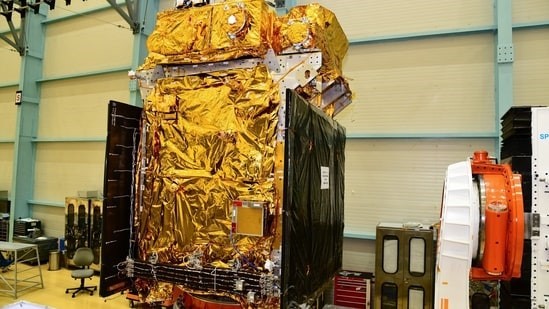Description

Disclaimer: Copyright infringement not intended.
Context
- India's solar mission, Aditya L1, has embarked on a journey to Lagrange point 1 (L1) and has begun its study of energetic particles in the solar wind from space.
Details
Purpose of the Mission
- Aditya L1, India's solar mission, aims to study the Sun and its various aspects, including the solar wind, which consists of charged particles emitted by the Sun.
Instrumentation
- The study of the solar wind is facilitated by a device called the Supra Thermal & Energetic Particle Spectrometer (STEPS), which is part of the Aditya Solar wind Particle EXperiment (ASPEX) payload.

Operation from Space
- STEPS began functioning from space within the Earth's magnetic field since September 10, 2023, when Aditya L1 was approximately 52,000 kilometers above Earth.
Development
- STEPS was developed by the Physical Research Laboratory (PRL) with support from the Space Application Centre (SAC) in Ahmedabad, India.
Understanding Space Weather
- The primary goal of STEPS is to study the environment of energetic particles from the spacecraft's vantage point at L1. Additionally, the data collected by STEPS will contribute to a better understanding of how space weather changes over time.
Sensor Configuration
- STEPS is equipped with six sensors, each observing in different directions and measuring supra-thermal and energetic ions.
- This data is crucial for analyzing the behavior of particles surrounding Earth, especially in the presence of the planet's magnetic field.
L1 Destination
- Aditya-L1 was launched by the Indian Space Research Organisation (ISRO) on September 2. It is heading toward the First Lagrangian point (L1), located about 1.5 million kilometers from Earth. L1 is a crucial vantage point for solar observations.
- On September 18, ISRO successfully performed the Trans-Lagrangean Point 1 Insertion (TL1I) maneuver, which placed Aditya-L1 on a trajectory that will take it to the Sun-Earth L1 point.
.jpg)
Conclusion
Aditya L1's mission to study the Sun and the solar wind is progressing well, and the STEPS instrument is actively collecting data on energetic particles, which will contribute to our understanding of space weather and help maintain the performance of space assets.
MUST READ ARTICLES:
https://www.iasgyan.in/daily-current-affairs/aditya-l-1-mission
https://www.iasgyan.in/daily-current-affairs/aditya-l-1-launched
|
PRACTICE QUESTION
Q. Underscore the potential impacts of the Aditya L-1 mission on advancing scientific understanding, fostering technological advancements, and contributing to international space exploration endeavors. (150 Words)
|
https://theprint.in/india/solar-mission-aditya-takes-steps-to-collect-info-on-energetic-particles-from-space/1769997/











